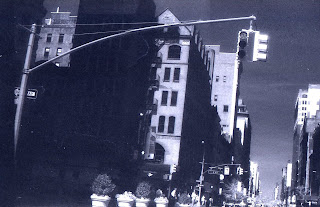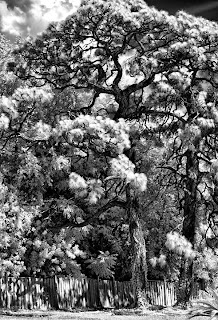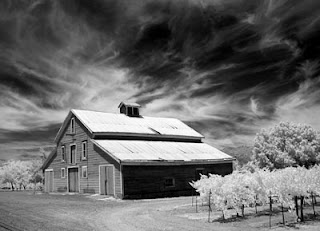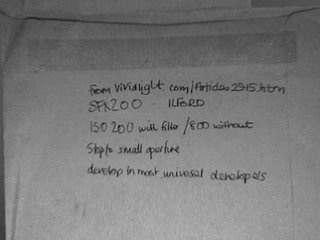I found this project quite a short lived one, which took a while to get started. Initially, the idea had been in my mind for a while, and it took a bit of working out what sort of images I wanted to take.
I found getting hold of the right film a bit of a struggle, as there were so many different types and so many stories of problems with exposure calculation, processing issues, filters to use [and I hadn't at that point even thought about a filter]. Luckily, there is a shop I found in Mansfield that sold the film I wanted, and had plenty in stock.
Then, once I had the film, I traipsed round Nottingham looking for an IR filter, most shops - even the 'specialist' one - hadn't even heard of IR films, let alone the filters. So, I had to resort to ebay. Unfortunately, the problem with this is that you don't fully know what you are buying, so I ended up with a filter that wouldn't let nearly enough light in. So, I took a half-film of images but none came out. I will take the filter on holiday though, and see if I get any when the days are brighter, on very long exposures.
I tried out a filter that George has lent me, and took some photos in college, and processed them and they came out well. A lack of IR light maybe, but some effects all the same.
I had to leave the photography for a while, as we had stuff going on at home, and at work, and on the days that the light was really good, I found myself stuck at Client's offices and when I was able to take photos, it was dull grey days. I got an opening one afternoon, just before I was leaving for college, the sun came out and I took some photos outside and down in the garden. As I left for college - I had about 6 shots left on the film, so I took 3 of the sky across the fields, 2 out of the car window and one as I saw in traffic lights. These 3 over the fields came out really well and I used them for the final images.
I printed them up using the Fibre paper and Agfa Neutol developer at college. I managed to get a good exposure for the images, and in one evening I managed to get all 3 images printed, even allowing for test strips and spoilt prints [included in the sketchbook].
I brought them home and - as they need over 30 minutes of washing to enable proper archiving and to avoid colouring of the paper - I put them in a the bath at home and gave them a good hour's wash. They dried out overnight and during the next day and once dry, I put them under some heavy books to flatten them out a bit.
I then mounted them onto foam board. I decided to make them more letterbox than 10x8 [which is the size they were printed at] as this lengthened the effect of the horizon.
I have enjoyed this, and still have plenty of IR film left to use over the next few months. I am planning on doing much more IR photography, and am currently looking into getting the HOYAR72 filter, as it can be used on some digital cameras to replicate the IR effects without any other manipulation.































